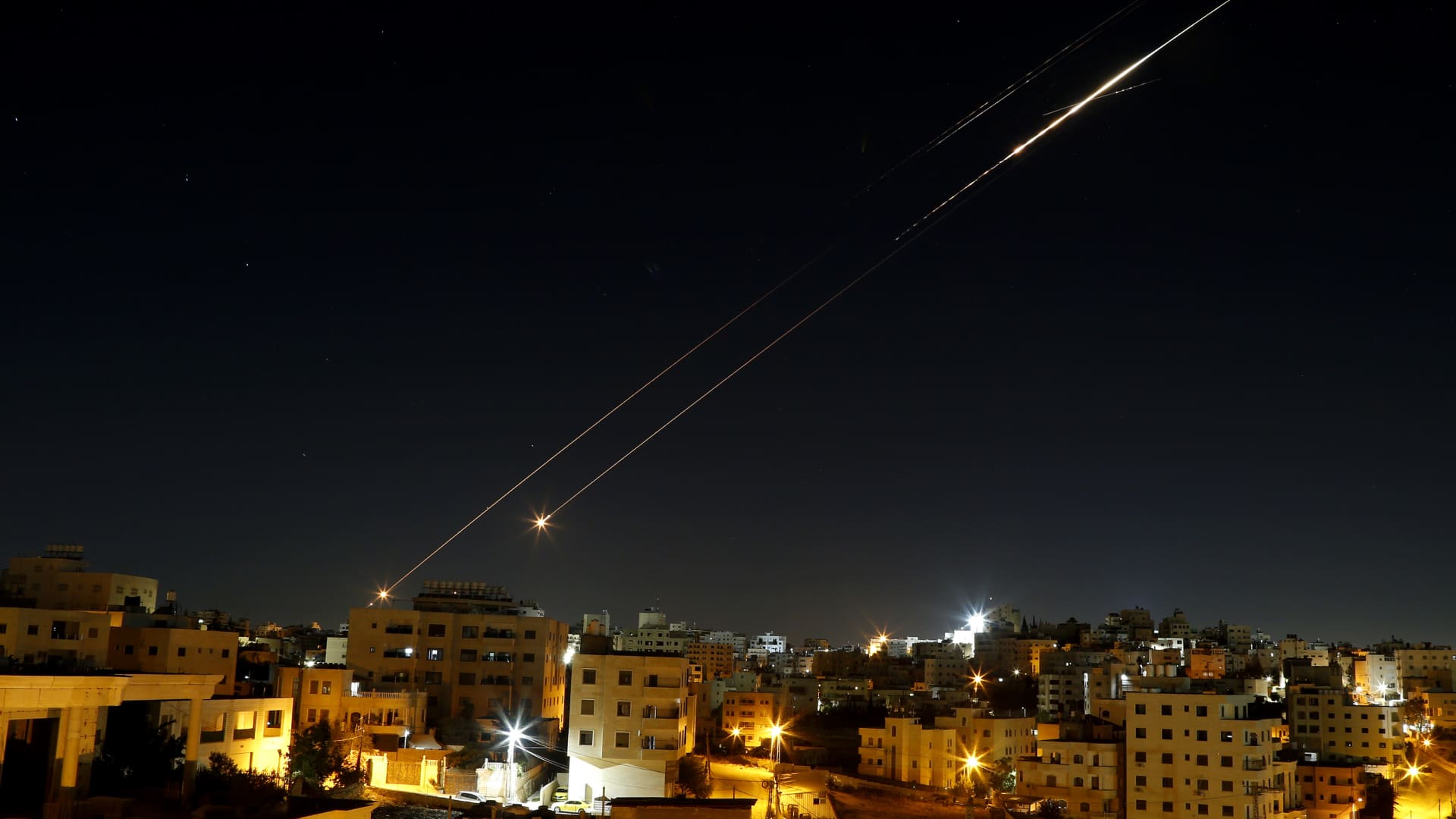Escalation and Retaliation: Analyzing the Iran-Israel Conflict Following U.S. Strikes
The Spark of Conflict
The recent surge in tensions between Iran and Israel, ignited by U.S. strikes on Iranian nuclear facilities, has pushed the region to the edge of a precipice. The sequence of events—U.S. military action, Iranian condemnation, and subsequent missile attacks on Israel—unfolds like a high-stakes game of chess, with each move carrying the potential to escalate into full-blown conflict. To understand the current crisis, it is essential to dissect the key elements: the immediate triggers, the responses, and the underlying historical context.
The Catalyst: U.S. Strikes on Iranian Nuclear Facilities
The spark that set off the current crisis was a series of U.S. military strikes on three Iranian nuclear facilities. These strikes, reported to have occurred on June 22nd, were a direct attempt to disrupt Iran’s nuclear ambitions. The timing and nature of these strikes are significant, as they were framed as a preemptive measure to prevent Iran from acquiring nuclear weapons—a claim that Iran vehemently denies. The Iranian government’s response was swift and unequivocal, with officials describing the strikes as “outrageous.” This strong reaction sets the stage for a series of escalating actions and counteractions.
Iran’s Initial Response: A Calculated Ambiguity
Iran’s response to the U.S. strikes was marked by a deliberate ambiguity, designed to keep all options open. Foreign Minister Abbas Araqchi’s statement that Iran “reserves all options” to defend itself is a masterclass in strategic communication. This phrasing avoids an immediate military threat but signals a willingness to consider all avenues, including diplomatic, economic, and military responses. The emphasis on “everlasting consequences” suggests a determination to respond in a way that goes beyond a simple tit-for-tat exchange, maintaining pressure on the U.S. and Israel while allowing Iran to assess its options and formulate a strategy.
The Immediate Aftermath: Missile Attacks on Israel
The most immediate and dramatic consequence of the U.S. strikes was a series of Iranian missile attacks on Israel. Reports indicate multiple waves of attacks, beginning early Sunday morning, targeting both central and northern Israel, with explosions even reported over Jerusalem. The Israeli Defence Forces (IDF) confirmed the launch of over 30 ballistic missiles, indicating a substantial and deliberate escalation. These attacks were a direct response to the U.S. strikes, fulfilling Iran’s initial warning of reserving “all options.” The attacks resulted in injuries, with at least 16 people reported injured by Magen David Adom (MDA), highlighting the immediate human cost of the escalating conflict.
The Broader Context: A History of Tension
To fully understand the current crisis, it is crucial to consider the broader historical context. The conflict between Iran and Israel is not a new phenomenon but rather the latest chapter in a long-standing history of tension and proxy conflicts. The provided snippets hint at this deeper context, with mentions of Israel launching a “surprise strike on Iran” on June 13th, preceding the U.S. action. This initial Israeli strike, framed as a preemptive measure against Iran’s nuclear program, likely contributed to the heightened tensions that ultimately led to the U.S. intervention. The consistent denial by Iran of seeking nuclear weapons further complicates the narrative, suggesting differing perceptions of threat and intent.
Analyzing the Nature of the Iranian Response
The nature of Iran’s response—specifically, the use of ballistic missiles—is significant. Ballistic missiles represent a substantial military capability, and their deployment signals a willingness to engage in direct military confrontation. The targeting of central and northern Israel, including areas near Jerusalem, suggests a deliberate attempt to demonstrate reach and impact. This is not merely a symbolic gesture; it is a demonstration of Iran’s ability to project power and inflict damage on key Israeli infrastructure and population centers. The scale of the attack, with over 30 missiles launched, reinforces this message.
The Role of the United States and Potential Future Trajectory
The United States’ role in this conflict is pivotal. The initial strikes on Iranian nuclear facilities directly instigated the current escalation. While the reports do not detail the specific rationale behind the U.S. action beyond concerns about Iran’s nuclear program, it is clear that the U.S. is acting as a key ally to Israel and is willing to use military force to counter perceived threats from Iran.
Looking ahead, several potential trajectories are possible. The conflict could escalate further, with Israel potentially retaliating against Iran for the missile attacks, leading to a wider regional conflict. Alternatively, diplomatic efforts could be intensified to de-escalate the situation and prevent further bloodshed. However, the strong rhetoric from both sides, coupled with the demonstrated willingness to use military force, suggests that a swift resolution is unlikely. The ambiguity surrounding Iran’s “all options” also leaves the door open for further, unpredictable actions. The possibility of proxy conflicts intensifying in other regions, such as Syria or Lebanon, also remains a significant concern.
A Precarious Balance: The Path Forward
The current situation represents a precarious balance, teetering on the brink of a wider regional conflict. The cycle of action and reaction—U.S. strikes, Iranian condemnation, missile attacks—demonstrates the inherent instability of the region. The repeated invocation of “everlasting consequences” by Iranian officials underscores the gravity of the situation and the potential for long-term repercussions. De-escalation will require careful diplomacy, a willingness to address the underlying concerns driving the conflict, and a commitment from all parties to avoid further military escalation. The immediate priority must be to prevent further loss of life and to create a space for dialogue, however challenging that may be. The path forward is fraught with risk, and the consequences of miscalculation could be catastrophic. The world watches with bated breath, hoping that cooler heads will prevail and that a diplomatic solution can be found before the situation spirals out of control.

